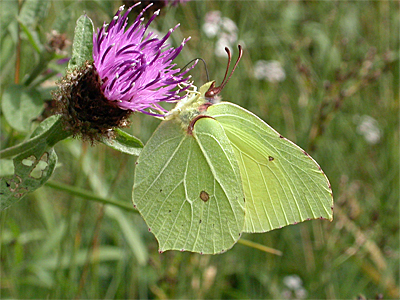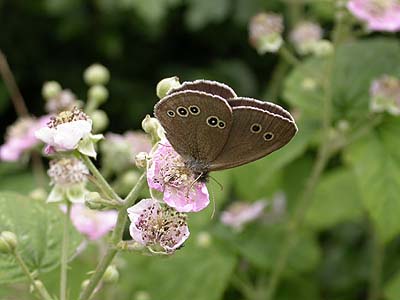

| An introduction to the butterflies of Eakring | ||
| ............... | ||
 |
Some 24 species of
Butterfly have been recorded here, with many of the
species found, being typical of those encountered in
similar habitat throughout the county. Migrants such as
Red Admiral and Painted Lady occur frequently and have
both bred. Both the Small and Large Skipper occur here amongst undisturbed grassy areas, but the Small Skipper suffered a population crash during 1999, which has virtually wiped the species from the area since. Despite regular and systematic searches, all records since 1998 have related to single adults. The Essex Skipper was recently added to the area list in July 2003, following their discovery near Eakring village. It's larger relative still remains quite easy to find. Most favoured areas are Eakring Meadows, along the old hedge at Eakring Flash and the grass track which runs through the Pastures area, but the Large Skipper is generally widespread throughout the area in small numbers. |
|
| ............... | ||
| The Large,
Small and Green-veined Whites are very common and good
numbers of all three are found during the flight season.
The Brimstone occurs widely, but most regularly in the
Hare Hill Wood and Eakring Meadows area, where it's food
plant grows in roadside hedgerows. The Orange Tip is
another very common and familiar species here. Rarest of the whites to occur is the Clouded Yellow, eventually added to the area list during the large influx of 2000, when a freshly emerged adult was found at Eakring Meadows. There were further records of returning migrants later in the year. Some species occur within the area here, as relatively dense colonies restricted to a small area. An example of this is the scarce but easily over-looked White-letter Hairstreak, which maintains a healthy colony within certain sections of Hare Hill Wood. This colony was discovered in 2000 and numbers have remained constant since. A similar situation exists with the Purple Hairstreak, which was found as a single colony at Lound Wood in July 2003. Most widespread of the blues, is the Small Copper. Common throughout the area, but especially around the Eakring Meadows reserve which also saw the first definite record of the Brown Argus in 2000 from Penny Pasture Common. The previous year, what was greatly suspected as being a Brown Argus, was noted briefly from Hunt's Meadow, where the Common Blue was present in good numbers at the same time. This was believed to be the only site for the Common Blue, until further discoveries were made elsewhere at Eakring Meadows, Eakring Flash, Leyfields and Oil Bore Holes in Eakring village (a site that also produced more Brown Argus records the same year) |
||
| ............... | ||
| The almost annual
parasitic fluctuations in the Holly Blue's status, have
been reflected here since 1998. Good years were
especially 1999 and to a lesser extent 2001. Small Tortoiseshell, Peacock and the Comma are all common. Comma numbers have increased since 1998 and the adults range widely throughout the area. Preferred sites being Hare Hill Wood and Eakring Meadows. As migrants, both the Red Admiral and Painted Lady are subject to considerable variations in their occurrence here. Most consistent arrivals concern the former species, with Painted Lady sightings involving just two in 1999 and being totally absent in 2001. Migrant Painted Ladies are less frequently noted on return migration than the Red Admiral, which can produce some quite spectacular movements. High vantage points are vital in recording highest numbers here and southward moving Red Admirals were noted flying low over the fields in groups of up to five or six at times among a total of just over 80 adults, during one particular early afternoon in September 2000. |
 |
|
| ............... | ||
| At Eakring Meadows many
of the browns suffer from a sometimes too early
grass-cutting date. Given the benefit of a postponement
of the grass cutting until a later time, the actual
numbers of adults of all species would increase. Despite
still being very common, the Meadow Brown and Gatekeeper
populations could be as much as three times higher than
it’s present level and the Ringlet could also assume
a much more common status than it's low numbers at
present. A slightly more even bias towards both insect
and flower management, would increase the value of the
meadows as a reserve within Nottinghamshire. The Wall Brown however, is still quite scarce some years (grassy sections of Red Hill and Eakring Meadows providing reasonable second-brood counts) but the Speckled Wood has shown one of the greatest increases in both range and annual numbers since 1998 and can be commonly met with just about anywhere. The Small Heath is severely limited in it's distribution here. There are few short, dry grassy areas, suitable for holding any real numbers and although annual, records have related to single adults only. |